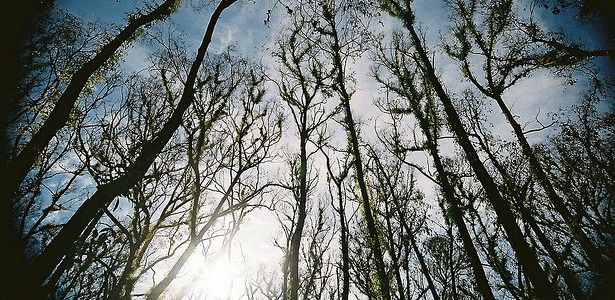
It was long assumed that forests recover very quickly after a drought ends, with the reemergence of rain subsequently returning trees back to normal levels of growth. But it’s now suspected that forests are hit much harder by drought than previously thought.
Research has shown that it can take two to four years before a tree returns to its healthy, pre-drought state and resumes normal growth; and since trees play a large role in carbon absorption, their findings could have implications for global warming.
In order to examine the effects of severe drought on 1,300 forest sites around the world, researchers looked to the International Tree Ring Data Bank (ITRDB), which has records stretching back to 1948. The tree rings showed evidence that after a drought, most of the trees that were examined continued to struggle, with growth rates and levels of carbon absorption found to be lower than expected. On average, growth was 9% percent lower the first year after a drought and 5% lower in the following year.
Although trees in California and parts of the Mediterranean seem to do better after a dry spell than the researchers expected, the majority of the world’s trees aren’t so lucky. Trees in dry regions—like pines and other species with lower hydraulic safety margins—are the most likely to suffer extensively from long periods without rain:
“These are the species that take risks—they tend to keep using water at a high rate even as drought progresses,” says William R.L. Anderegg, assistant professor of biology at the University of Utah.
The exact reason for this lasting impact isn’t known, but the researchers posit that the lack of water may have decreased foliage and the amount of stored carbohydrates, damaged the vascular systems that circulate water, or allowed pests and diseases to accumulate, negatively affecting trees that were already under duress.
Whatever the reason, there is cause for concern. Current climate models counted on the trees’ resilience to drought, assuming they would recover quickly and continue to absorb about 25% of human carbon emissions annually. If this is not the case, it could mean that climate change may occur more quickly than scientists have estimated.
“In most of our current models of ecosystems and climate, drought effects on forests switch on and off like a light. When drought conditions go away, the models assume a forest’s recovery is complete and close to immediate,” Anderegg said. “That’s not how the real world works.”

According to Anderegg, an increase in the frequency and severity of droughts due to climate change could further compound the problem:
“Drought, especially the type that matters to forests, is about the balance between precipitation and evaporation. And evaporation is very strongly linked to temperature. The fact that temperatures are going up suggests quite strongly that the western regions of the U.S. are going to have more frequent and more severe droughts, substantially reducing forests’ ability to pull carbon from the atmosphere.”
The researchers have estimated that over the next century, forests could absorb up to 1.6 gigatons less carbon than current theories suggest.
Moreover, Anderegg speculates that, within the next two years, this new information could be incorporated into new climate models, providing a clearer and more accurate picture of how climate change may progress, and what we can expect in the future.